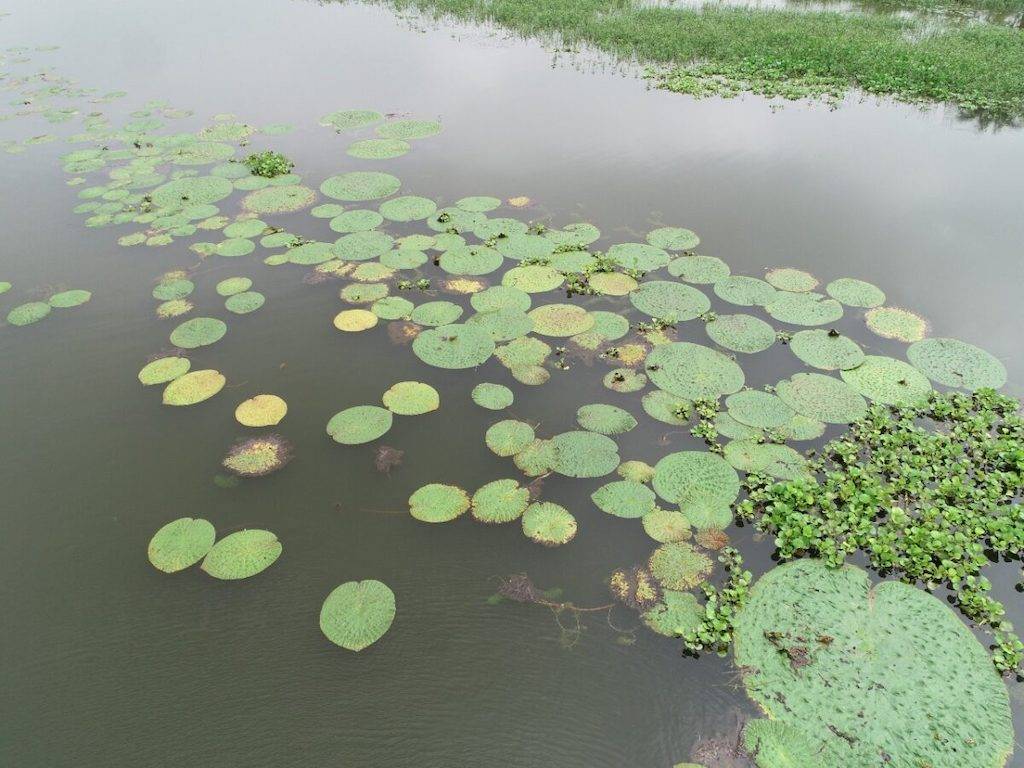
Weather uncertainty and recurring flooding have harmed conventional crops like corn and rice farming in Bihar in recent years. Some growers, on the other hand, have turned the crisis into an advantage by making foxnut their primary crop. Foxnut, also known as makhana, is derived from the prickly water lily (Euryale ferox), a plant that grows in stagnant water such as wetlands or ponds.
With a 90 percent market share, Bihar is the world's largest manufacturer of makhana.
“Makhana turned me into a contented farmer. Corn and rice were two crops I used to produce, but they were not lucrative. I pursued wheat farming as well, but was unable to make it a successful enterprise. But now, makhana is proving that my decision to become a farmer was correct,” said Chinmayanand Singh, a Purnea-based farmer. Singh abandoned his work as a journalist to seek a career in agriculture. It's the only crop in the country that doesn't get hit by bad weather. Heavy rains and floods do not frighten us, he added.
“We normally make double the investment from makhana crop,” Singh said when asked about the benefit from the produce. In this time of climate crisis, I believe this crop is the most appropriate,” he said.
Many farmers in the Kosi-Seemanchal district, like Singh, are turning to foxnut farming as a means of survival. In Bihar's northeastern corner, Kosi-Seemanchal is a subregion of the Mithila division. Kosi and Purnia divisions make up this group. Araria, Madhepura, Saharsa, Supaul, Purnea, Kishanganj, and Katihar are among the seven districts that make up the state. In this area, makhana sowing has increased.
According to estimates, the foxnut sowing area in Kosi-Seemanchal is between 10 and 15 thousand hectares, while the total foxnut area in Bihar is between 25 and 30 thousand hectares. The state government has also recognized new farming trends, announcing a plan to repurpose 1.04 lakh (104,000) hectares of abandoned low land for foxnut production.
Makhana is known as a superfood
Because of its nutritious value, Makhana is often advertised as an organic, gluten-free snack and superfood.“Makhana is a food that acts as a drug. It has a carbohydrate content of 78% and a protein content of 10%. Vidyanath Jha, a researcher and professor at MLM college in Darbhanga, said, "It is also abundant in many minerals."“Puffed and roasted foxnuts are common snack foods. They can be served as a snack after being tossed with some black salt. “Its kheer is preferred by some,” Jha said.
Apart from India, foxnut is grown in Korea, Japan, and Russia, but Darbhanga, Madhubani, Purnea, Saharsa, Katihar, Supaul, Sitamarhi, Araria, and Kishanganj account for nearly 90% of the total crop. Previously, foxnut cultivation was restricted to Darbhanga-Madhubani, Saharsa-Supaul, and a small portion of Sitamarhi, but now farmers from Purnea division districts are also interested in the crop.
Purnea is known as Makkahland (land of maize) because maize is the area's main crop. However, in recent years, the area's crops have been harmed by the unpredictable weather. The popularity of foxnut farming in this region has environmental implications.
“After harvesting, the foxnut leaves and stalks are reused. It is used to fertilize the following crop. Few farmers, on the other hand, use chemical fertilizer in the region, which has a negative effect on the crop and the environment,” Singh explained.
Many farmers in the region are abandoning their conventional cropping patterns in favour of foxnut farming. Umapati Thakur, a farmer from the Katihar district, recently switched to foxnut farming. “I have been losing a lot of money due to flooding for the past few years. My fields are situated on the outskirts of low-lying areas. I discovered that makhana is appropriate for my fields. Compared to other crops like rice and wheat, I make more money from foxnut farming,” he added.
Foxnut is a climate-smart crop
Purnea farmer Singh claims that foxnut can withstand weather fluctuations. “During rains, foxnut leaves transform, but this is a simple situation to deal with. After the wind, we'll be able to transform the leaves on. We haven't had any water shortages in the region yet,” Singh said.
The government of Bihar is also encouraging foxnut farming in the state. Traditionally, foxnut was sown in ponds and wetlands, but lowland areas are now being used as foxnut sowing areas. In Katihar district, farmers are building weirs in the fields to carry water for foxnut farming. The state government has devised a scheme in which 1.04 lakh hectares of land will be used for foxnut cultivation.
In the foxnut sector, there is a shortage of qualified labor
On the land, foxnut farmers are facing a shortage of qualified labor. To plant and harvest foxnut, employees must spend hours in the water. “Skilled workers are hard to come by in this area,” Singh said. “In foxnut farming, weed control and proper harvesting are two vital steps. Every phase is labor intensive, and we must commit a considerable amount of time and effort to them,” Singh said.

















